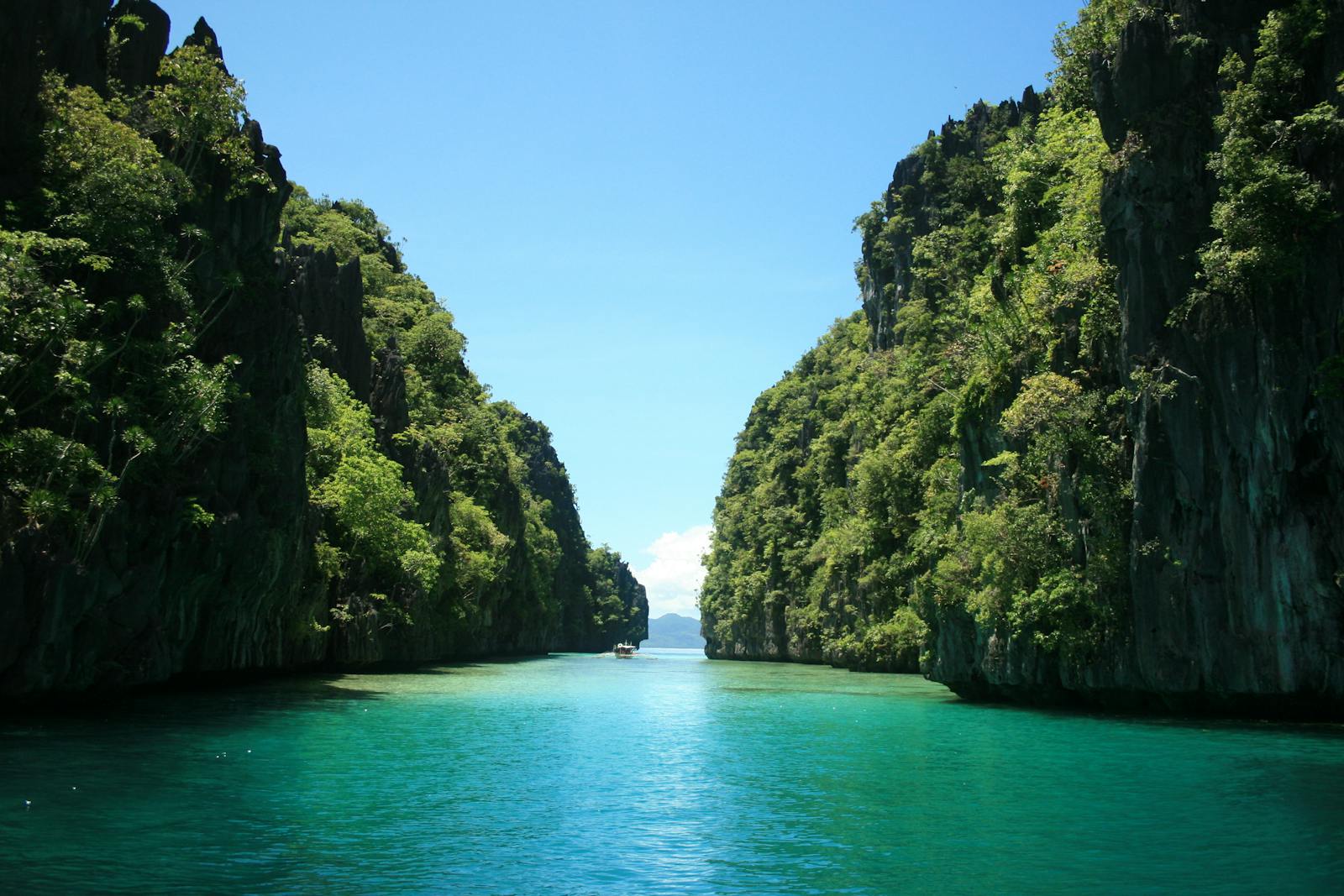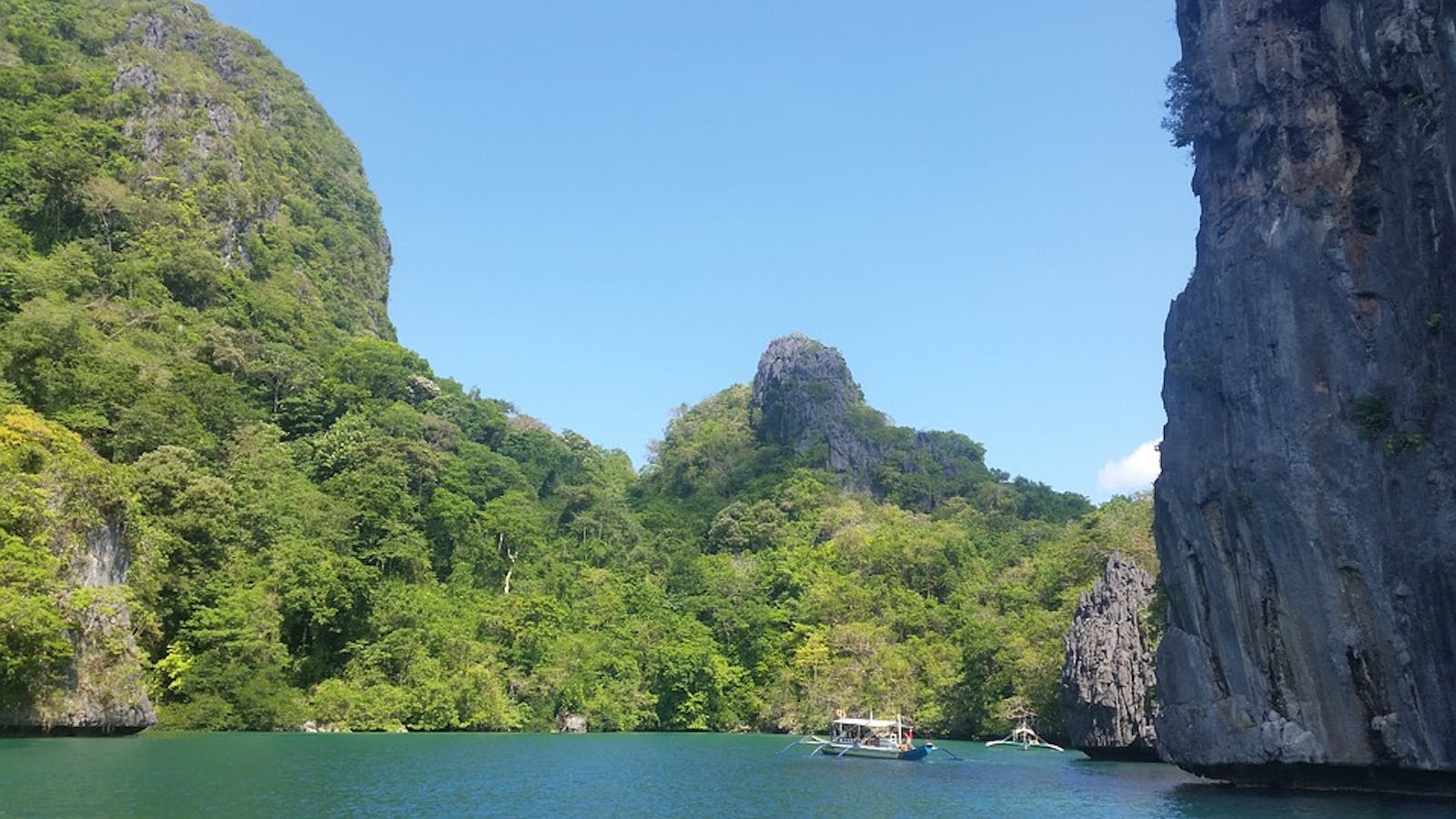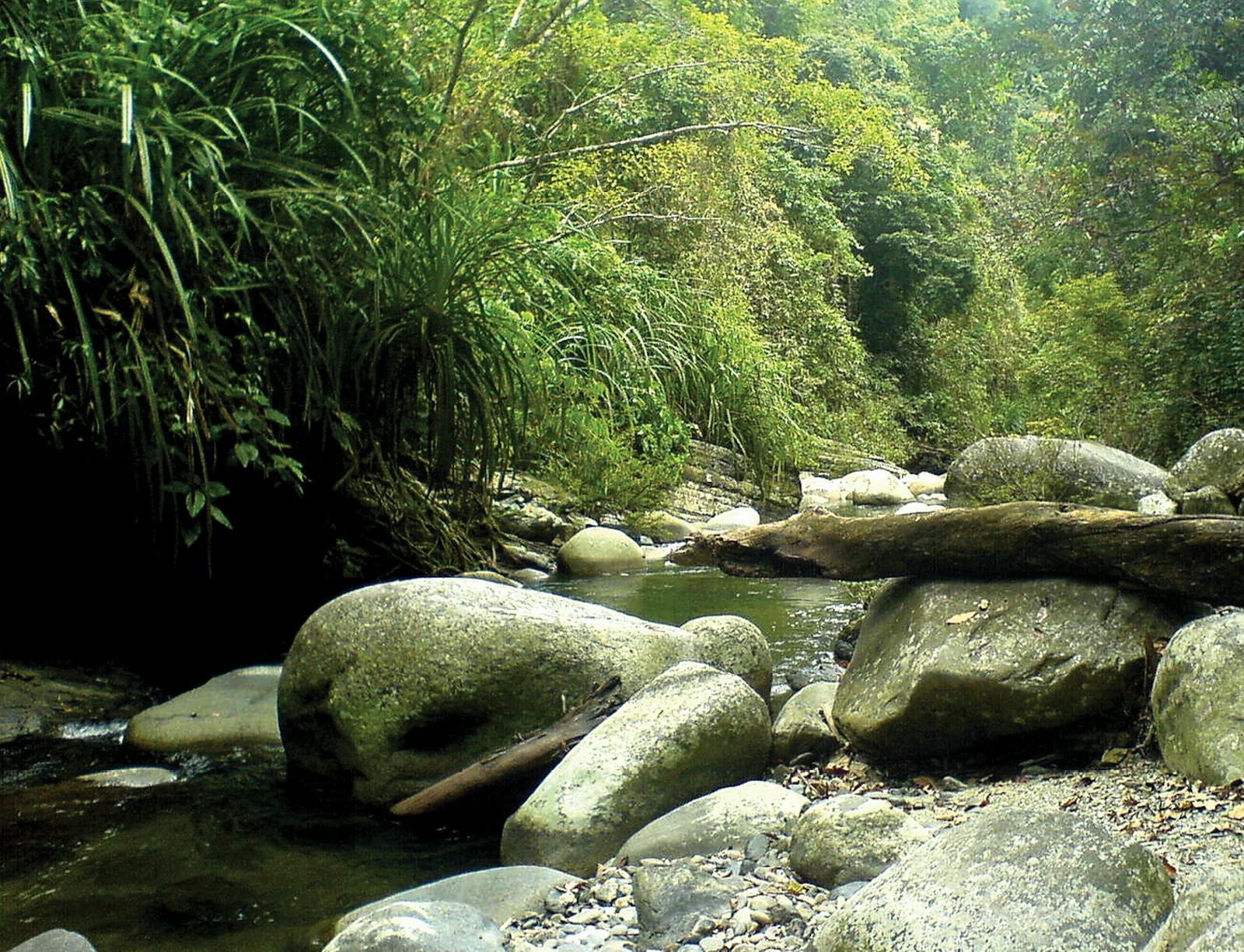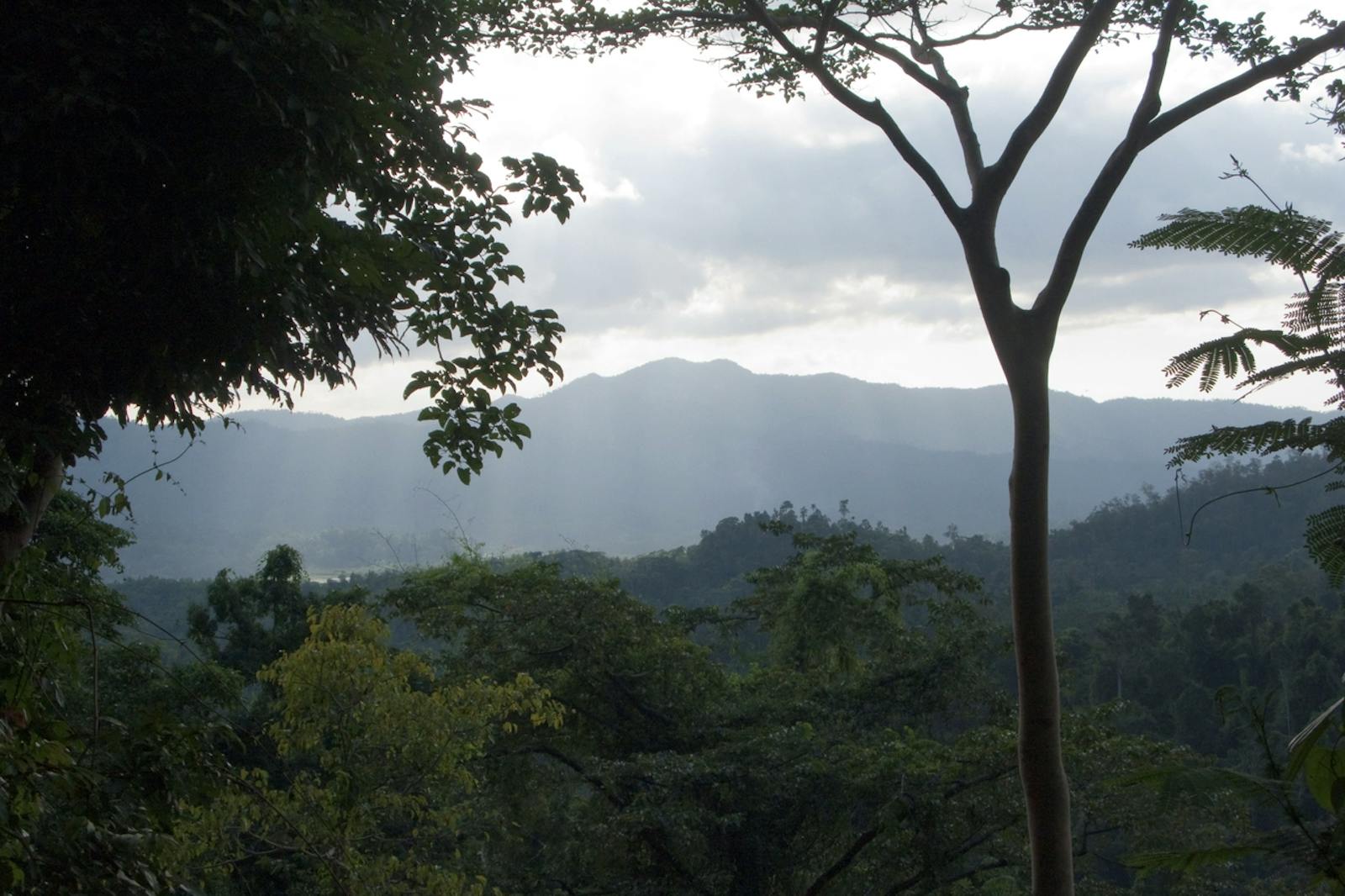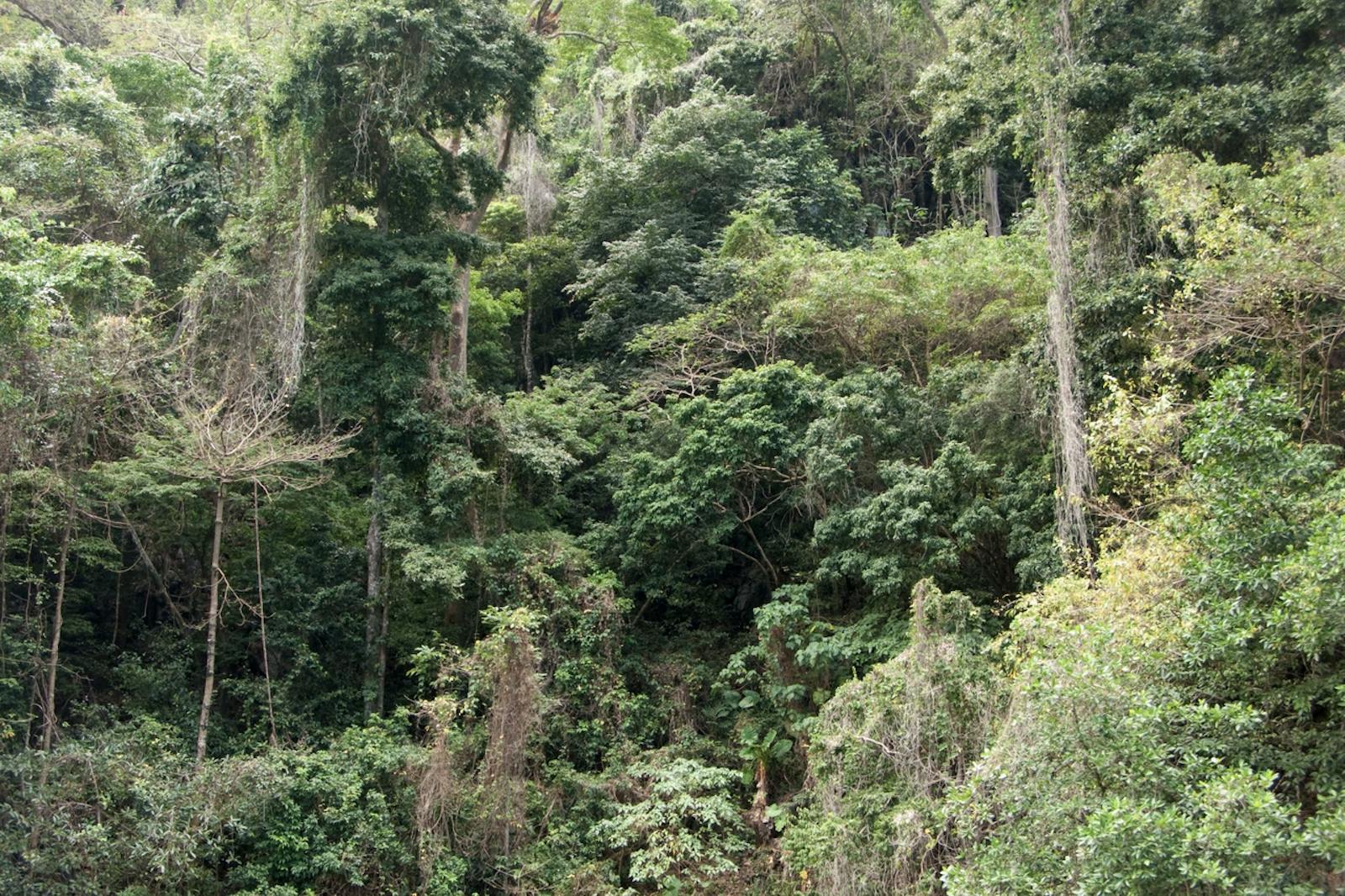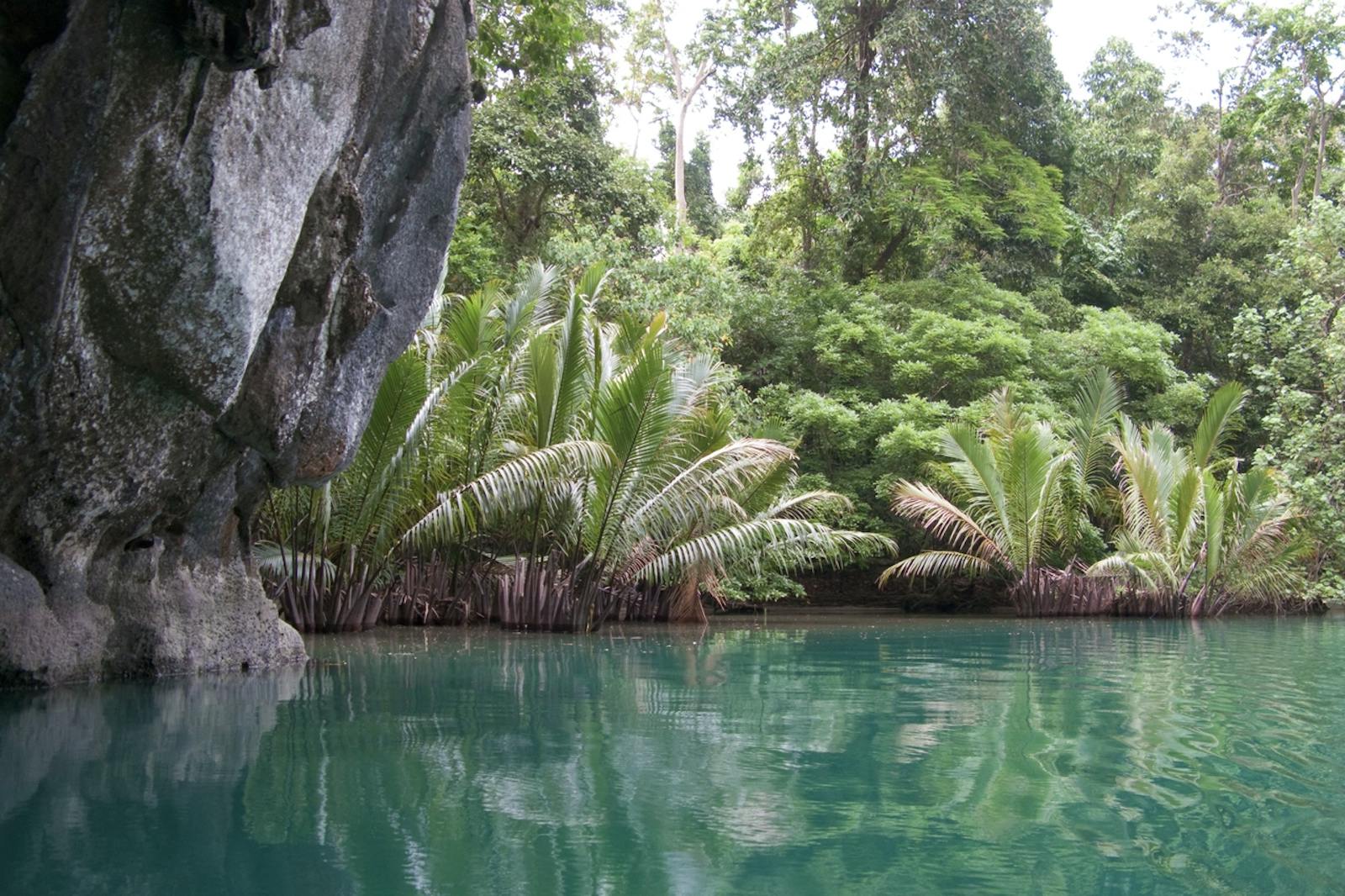Palawan Rainforests
The ecoregion’s land area is provided in units of 1,000 hectares. The conservation target is the Global Safety Net (GSN1) area for the given ecoregion. The protection level indicates the percentage of the GSN goal that is currently protected on a scale of 0-10. N/A means data is not available at this time.
Bioregion: Philippines & Sulu Sea Tropical Forests (IM15)
Realm: Indomalaya
Ecoregion Size (1000 ha):
1,437
Ecoregion ID:
262
Conservation Target:
95%
Protection Level:
9
States: Philippines
The pangolin is a myrmecophage, an almost unpronounceable term that refers to an animal that eats ants and termites. Also known as scaly anteaters because of its body armor of multiple rows of overlapping scales, the pangolin rolls up into a ball when threatened. There are eight species of pangolins in the world—four each in Africa and Asia—but the Palawan pangolin is found only on Palawan Island and the small offshore islands. Their protective scales are highly sought after in the traditional Chinese medicine trade; thus, pangolins are now one of the most poached and traded of all endangered wildlife.
.jpg)
The flagship species of the Palawan Rainforests ecoregion is the Palawan pangolin. Image credit: Gregg Yan, Creative Commons
The Palawan Rain Forests ecoregion covers Palawan and its peripheral islands. The climate is tropical with a three-month dry season and rain for the rest of the year. Northern Palawan experiences torrential rains from tropical depressions from July to August. The average maximum temperature is 31°C, with little annual variation. Palawan is known as the ‘last frontier’ for biodiversity in the Philippines because of its biological treasures.
Over 10,000 years ago during the last Pleistocene ice age, the sea level dropped below present levels, connecting Palawan Island with Borneo and allowing the exchange of terrestrial fauna. Thus, Palawan’s flora and fauna include species from the Philippines and mainland Asia, known as the Sundaic biodiversity.
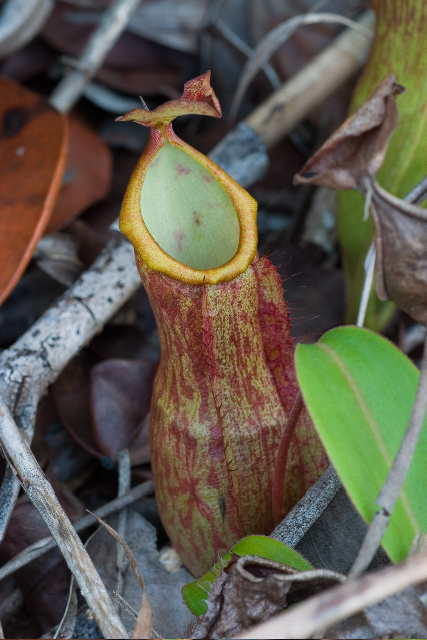
Nepenthes philippinensis
Almost half of Palawan’s topography is steep mountainous. Over 3,500 flowering plant species with 20% endemism are known from the island. The vegetation types are diverse. A beach forest characterized by trees such as Calophyllum inophyllum, Canarium asperum, Pometia pinnata, Palaquium dubardii, and species of Ficus transitions into lowland evergreen Dipterocarp rainforests that are dominated by Dipterocarpus gracilis, D. grandiflorus, Exocarpus latifolius, Swintonia foxworthyi, Dracontomelon dao, Pongamia pinnata, and species of Ficus, Aglaia, Tristania, and Syzygium, with Cycads in the lower strata.
Montane forests are dominated by Agathis philippinensis, Dacrydium pectinatum, Podocarpus polystachyus, Gnetum latifolium, and Cinnamomum rupestre. Limestone forests in southern Palawan and the surrounding islets are characterized by species of Euphorbia, Aglaia, Antidesma, Drypetes, Gomphandra, Sterculia, Pleomele. Begonias grow in limestone cracks and crevices. Begonia is a genus of perennial flowering plants in the family Begoniaceae. The genus contains 1,795 different plant species. The Begonias are native to moist subtropical and tropical climates. Some species are commonly grown indoors as ornamental houseplants in cooler climates.
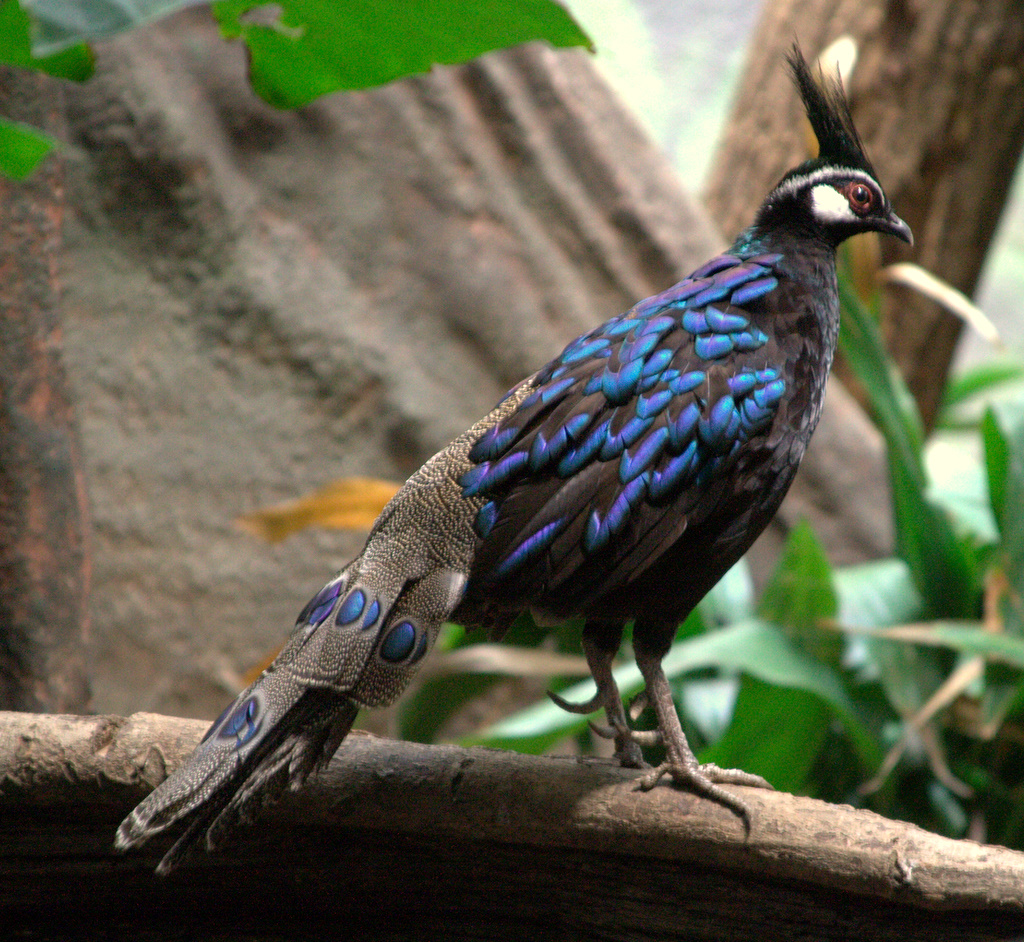
Palawan peacock-pheasant
Victoria Peak in south-central Palawan has a large ultramafic forest, with trees such as Scaevola micrantha, Brackenridgea palustris, and Exocarpus latifolius that are considered to be indicators of heavy metals. Nepenthes philippinensis, an endemic pitcher plant, grows on these nutrient-bare soils.
The ecoregion has a rich fauna with several endemics. This includes the endangered Calamian deer that is endemic to the small Calamian Islands north of Palawan. The endemic Palawan bearded pig is now considered a species, rather than a subspecies. Other endemic species of the ecoregion include the Northern Palawan tree squirrel, Palawan mountain rat, Balabac mouse deer, Palawan treeshrew, Palawan flying fox, Palawan stink-badger, Palawan montane squirrel, and Palawan pencil-tailed tree mouse to name some.
Borneo and Palawan share 23 bird species that are absent from other Philippine islands, indicating an immigration pathway from mainland Asia to the Philippines through Palawan. Among the 17 endemic birds are several that are now threatened by habitat loss, such as the Palawan hornbill, Palawan peacock-pheasant, Palawan Scops-owl, and Palawan blue-flycatcher. Palawan has a refuge population of the critically endangered Philippine cockatoo, once widespread in the Philippines.
Over 85% of the ecoregion is formally protected, including the huge Palawan Game Refuge and Bird Sanctuary (7,614 km2) that covers the entire island of Palawan. However, the status of its protection and management is unclear. In the meantime, there are potential threats from logging and mining for a host of minerals and oil throughout Palawan.
Thus, the recommended priority conservation actions are to: 1) identify a manageable network of protected areas through a strategic planning exercise based on biodiversity conservation priorities; 2) conduct more surveys for a comprehensive understanding of biodiversity; and 3) engage local communities in conservation.
Citations
1. Philippine Biodiversity Strategy and Action Plan. 2015-2028. Department of Environment and Natural Resources. https://www.cbd.int/doc/world/ph/ph-nbsap-v3-en.pdf downloaded 16 March 16, 2018
2. Esselstyn, J.A., Widmann, P. and Heaney, L.R., 2004. The mammals of Palawan island, Philippines. Proceedings of the Biological Society of Washington, 117(3), pp.271-302.
3. Wikramanayake, E, E. Dinerstein, et al. 2002. Terrestrial Ecoregions of the Indo-Pacific: A Conservation Assessment. Island Press.
